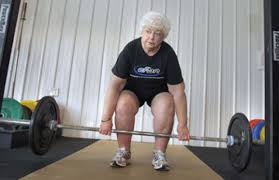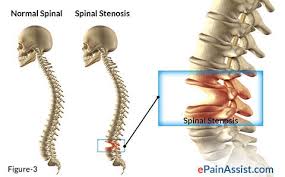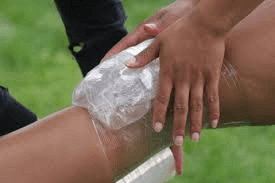How NOT to Treat Your Pulled Muscles at Home
Website Team • March 13, 2020

A pulled muscle refers to a strained, twisted, or torn muscle or an injured tendon, the latter of which is a strong elastic-like tissue that connects muscles to bones. The symptoms of a pulled muscle include: swelling and bruising at the injury site, muscle weakness, the sudden onset of pain, soreness, reduced mobility, stiffness, and pain during movement.
There are a number of beneficial home remedies such as the use of over-the-counter nonsteroidal anti-inflammatory drugs or NSAIDs (e.g., ibuprofen, aspirin), that target pain and swelling. In addition, rest, ice, compression, and elevation (RICE) helps improve discomfort. However, treatment methods that are poorly executed at home can worsen the symptoms of a pulled muscle. Here are a few of the wrong ways to treat muscle injuries at home.
Improper Resting Techniques
One common problem involves understanding how to properly rest an injured muscle. Some individuals try to engage in regular physical activity shortly after pulling a muscle, especially if they are taking NSAIDs that lessens the pain, but excessive movement following a muscle injury can cause more damage. Therefore, the affected muscle should only be moved when necessary and in a careful manner that does not increase pain. On the other hand, resting the muscle for too long may cause it to become weak and this can delay the healing process. Typically, an individual can slowly begin to move a pulled muscle after about two days as long as the movements are not excessive or repetitive.
Placing Ice Directly On The Skin
A painful muscle injury usually prompts individuals to quickly place ice, an ice pack, or even a cold package (e.g., bag of frozen vegetables) on the affected area, but it is important to cover the ice or frozen item before placing it on the skin in order to avoid experiencing frostbite. Frostbite typically occurs in stages and it starts with prickling or tingling of the skin that is known as frostnip.
The next stage is superficial frostbite, which causes skin discoloration and increased pain that indicates that the cold temperature is starting to negatively affect the outer layer of the skin. The third stage is true frostbite, which is characterized by muscles and joints that become progressively stiff and, in some cases, the development of blisters when attempts are made to warm the skin. These symptoms of frostbite indicate that deep tissues have been affected.
The signs of frostbite are CBAN, which is the acronym for cold, burn, ache, and numb. Cold is the general sensation that is felt when ice is placed on the muscle, but it should be removed before a burning sensation begins. Burning sensations mean that nerves are being affected by the cold temperature. Similarly, aching is an indication of superficial frostbite, which injures skin cells and numbness reflects the onset of true frostbite. Therefore, placing ice or ice packs directly on the skin can lead to skin and muscle damage that worsens a pulled muscle.
To avoid this problem, always place a cloth such as a towel over the ice or ice pack. Furthermore, an ice pack should never be left on the injured area for more than 20 minutes, but if any of the signs of CBAN occur before that, the ice pack should immediately be removed from the area. This practice helps reduce swelling without causing further damage to the pulled muscle.
Wrapping The Muscle Too Tightly
The aim of compression wrapping is to apply pressure to an injured muscle in order to help reduce swelling by preventing fluid from accumulating at the injury site. If the muscle is wrapped properly, this method can be quite beneficial toward aiding the recovery of a pulled muscle. However, serious complications may arise if the muscle is not wrapped carefully.
The most common problem that occurs is wrapping a muscle too tightly. This can cause poor blood circulation and swelling around the affected area. More specifically, if the wrap is too tight, blood vessels become squeezed, blood flow rapidly decreases or gets completely cut off, and tissue in the affected region gradually begins to break down if the pressure is not relieved in a timely manner. Signs which indicate that a wrap is too tight include skin discoloration (e.g., skin that is blue or black in color), burning, tingling, or numbness, and increased pain. If these symptoms arise, the wrap needs to be removed immediately.
Another common complication arises when extra layers of a compress (e.g., bandage, tape) are wrapped around the top portion of the affected limb. It is best to place the extra layers around the pulled muscle, as increasing the number of layers outside of the injured area may cause a tourniquet-like effect that decreases blood circulation throughout the limb. This can also cause numbness and weakness in the limb as well as tissue damage if the wrap is left on for too long.
In general, a wrap should fit snugly around the limb and an individual should be able to easily slide one finger under the wrap. In addition, if the wrap is for mild to moderate discomfort it can be removed throughout the day to encourage healthy blood flow. After removing the wrap, wait about 15-20 minutes before reapplying the wrap. Furthermore, if there is confusion regarding the proper way to wrap an injury, or pain and numbness keeps occurring when the area is wrapped, it is important to consult a doctor, physical therapist, or other qualified healthcare professional.
Summary
A mild to moderate muscle injury can safely be treated at home if an individual properly rests, ices, compresses, and elevates the affected area, but it is possible to cause more muscle damage by making simple mistakes. If you are concerned about how to properly treat a pulled muscle at home, or your injury worsens, an appointment should be made to speak with a physical therapist who can recommend the best form of treatment. At Hershey Rehab, our professionals are waiting to help you. Please call today.










